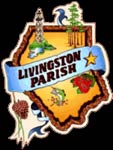|
| Mass Fatality Plan |
<< Prev Page |
Next Page >> |
page 3 |
-
-
Incident Morgue Operations
The Incident Morgue site will be determined based upon the size and nature of the mass fatality event. Seale Funeral Home will be the designated Incident Morgue site unless the Coroner designates another location as Incident Morgue site. Transportation to Incident Morgue site will be coordinated with the Livingston Parish Sheriff’s Office and Seale Funeral Home. Other Incident Morgue sites may be chosen based upon the site and type of mass fatality event. Examples of other Incident Morgue sites are the Livingston Parish Fairgrounds, the Livingston Parish Health Unit, the Livingston Parish Sheriffs Office Firing Range, a local warehouse, a local field. Refrigerated trucks may be required to serve as cold storage facilities at the Incident Morgue location.
The main purposes of the Incident Morgue are to determine cause of death, identify victims, and to secure and identify personal effects. Post mortem records will be completed for every body and body part as they are processed. Post mortem records include personal effects, photography, radiographs, anthropology, fingerprints, dental and pathology reports. The post mortem records will be compared to the ante mortem records obtained from the victim’s family and other sources such as fingerprint repositories and hospital records. Personal effects such as driver licenses found on the victim or statements of recognition should not be used as positive identification, but rather tentative identification. Positive identification will be the responsibility of the coroner. After identification is established and coroner investigation completed, the coroner will release the body and, or body parts based on the desires of the next of kin. Victim identification will be established using the following methods.
Presumptive Identification:
If visually recognizable, direct visual or photographic identification of the deceased will be made. Also, personal effects, circumstances, physical characteristics and tattoos will be used in the identification process.
Confirmatory Identification:
Fingerprints, Forensic Odontology, Radiology, DNA analysis and Forensic Anthropology.
Disaster Mortuary Operational Response Team
DMORT will be contacted for assistance in any mass fatality event occurring within Livingston Parish. DMORT is a federally funded team of forensic and mortuary personnel experienced in disaster victim identification. DMORT provides a mobile morgue, victim identification and tracking software, and specific personnel to augment local resources. DMORT is part of the National Disaster Medical System, a division of the U. S. Department of Health and Human Services.
- The DMORT portable morgue requires a building for morgue operations.
- The federal government pays for travel, lodging, food, salary, and other expenses of DMORT personnel, except in the case of activation under the Public Health Act.
- The DMORT team supports the local medico-legal authority by providing expertise, personnel, supplies, and equipment. The responsibility for assigning the cause and manner of death, signing of death certificates, and death notification remain with the local authority. All records created by DMORT will be left with the local authority. DMORT will provide identification reports and a computer program documenting the information collected during their response.
- The DMORT Family Assistance Center team provides assistance in the organization and operation of the Family Assistance Center.
- If a DMORT team member is activated from your agency to work at a disaster, that employee should present a copy of their travel orders to you as proof of activation.
DMORT can be activated by four methods:
- Federal Disaster Declaration:
The Federal Response Plan dictates how federal agencies respond following a disaster. A request for DMORT assistance must be made by a local official through the state Emergency Management Agency, who will then contact the regional office of the Federal Emergency Management Agency (FEMA). Based on the severity of the disaster, FEMA can ask for a presidential disaster declaration, allowing the DMORT team to be activated. This process can take 24-48 hours.
- Aviation Disaster Family Assistance Act:
Under this federal act, the National Transportation Safety Board (NTSB) can ask for the assistance of DMORT. The act covers most passenger aircraft accidents in the United States and U.S. territories. The NTSB coordinates with the local medico-legal authority to assess local resources and capabilities, and can activate DMORT upon the request of the local authority.
- U.S. Public Health Act:
Under the U.S. Public Health Act, the U.S. Public Health Service can provide support to a state or locality that cannot provide the necessary response. Under this act, the state or locality must pay for the services of DMORT, including salary, expenses, and other costs.
- Memorandum of Understanding with Federal Agency:
The DMORT may be requested by a federal agency to provide disaster victim identification. Under this mechanism, the requesting agency must pay for the cost of the DMORT deployment. As an example, following the crash of United Airlines Flight 93 in Pennsylvania on September 11, 2001, DMORT was activated under an MOU with the FBI.
|
 |
|

